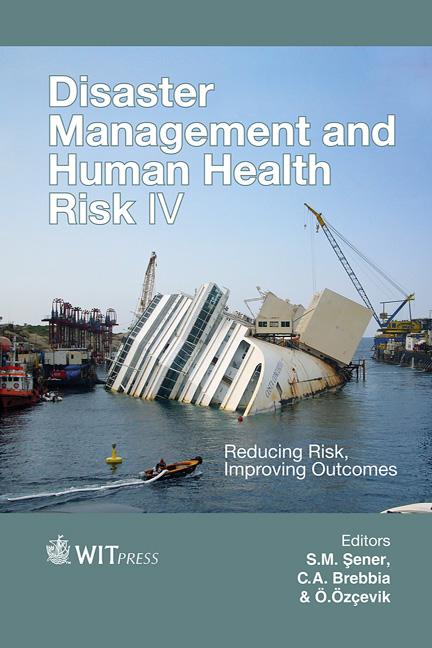The Evolution Of The Protection Systems Against Natural Disasters In Brazil: Laws, Agencies, Information And Knowledge
Price
Free (open access)
Transaction
Volume
150
Pages
9
Page Range
49 - 57
Published
2015
Size
452 kb
Paper DOI
10.2495/DMAN150051
Copyright
WIT Press
Author(s)
É. Soriano, W. A. M. Hoffmann
Abstract
Natural disasters occur all over the world in different degrees and levels, by the frequency of events, the intensity of processes, and the vulnerability of population groups. Brazil has always been discursively and popularly considered a safe country regarding the occurrence of natural disasters. This interpretation is due to its geographical localization, which prevents earthquakes’ occurrence, volcanic activity and tropical cyclones in its territory. On the other hand, it is one of the countries that registered the highest number of natural disasters, especially those associated with geological and hydrologic processes. According to the United Nations, in 2008, Brazil was the 13th most affected country by natural disasters. The Brazilian Atlas of Natural Disasters indicates that the record of natural disasters occurrence in the country reported a positive increase of 268% in the last ten years. After the disaster in the mountainous region of Rio de Janeiro in 2011, the government sought to structure itself in order to prevent new disasters. Thus, different organizations that are part of the National System of Protection and Civil Defense (NSPCD) were created, such as: The National Center for Monitoring and Warning of Natural Disasters (CEMADEN), The System of Urban Occupation Monitoring proposed by the Ministry of Cities (MCid), The Integrated System for Information about Disasters (S2iD), and others. The aim of this study is to analyze the evolution of systems for protections and disasters risk in Brazil, as well as to evaluate knowledge gained by the departments of protection and civil defense.
Keywords
natural disasters, vulnerability, civil defense, knowledge




